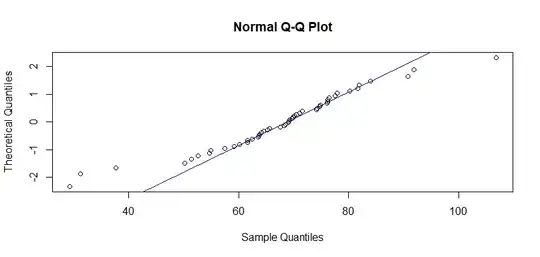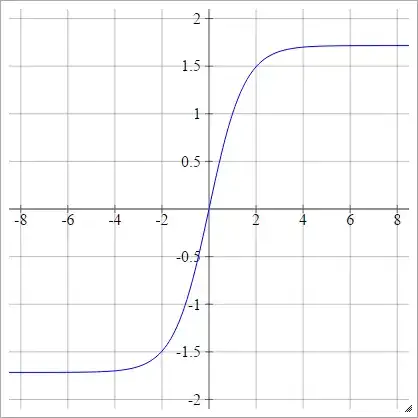Are central values in a bootstrap confidence interval more likely for the population parameter concerned than the values near the boundaries? This interpretation applies to parametric CIs but does it apply to bootstrap CIs also? Thanks!
-
I think this is answered here: https://stats.stackexchange.com/questions/40769/are-all-values-within-a-95-confidence-interval-equally-likely Be warned that bootstrap confidence intervals are generally too narrow. – rishi-k Jul 01 '21 at 22:53
-
@rishi-k. "Too narrow" compared to **what?** If you know data are normal and use a t confidence interval, then the procedure has the information that data are from a normal dist'n with tails (albeit thin) extending to $\pm\infty.$ So the CI may be relatively long. But if the population dist;n is unknown, the bootstrap procedure assumes only that the population can produce the data at hand, and the CI may be shorter than the t CI but still appropriate. // Assumptions inevitably bring additional information to the analysis. So comparing CIs made under different assumptions is may be misleading. – BruceET Jul 04 '21 at 01:49
-
Too narrow compared to their nominal coverage probability. I just mean to point out that unless you have a lot of data, a bootstrap 95% CI is probably not actually a 95% CI. Wild bootstrap aside, but that's really just inverting a sign-change test. – rishi-k Jul 04 '21 at 03:10
1 Answers
You'd have to be careful what you mean by more likely.
To make a traditional z interval with confidence $1-\alpha$ for normal mean $\mu$ $(\sigma$ known), you can begin with $P\left(\frac{\sigma}{\sqrt{n}}L <\bar X - \mu<\frac{\sigma}{\sqrt{n}}U\right),$ where $L$ and $U$ cut probability $\alpha/2$ from the lower and upper tails of standard normal distribution. So the highest density (likelihood) is between $L$ and $U.$ Then 'pivot' to get the $1-\alpha$ CI $\left( \bar X- \frac{\sigma}{\sqrt{n}}U,\; \bar X -\frac{\sigma}{\sqrt{n}}L \right)$ for $\mu.$ But be careful with the terminology: A 90% CI is shorter than a 95% interval,
Similarly, if I am making a $1-\alpha$ nonparametric quantile bootstrap CI for $\mu$ for a sample from a distribution with mean $\mu,$ but unknown shape,
I will re-sample of many values $\bar X^*$ (a.re in the R code) based on re-samples of size
$n$ with replacement from my sample x of $n$ observations from such a population.
Consider the sample with numerical and graphical summaries below.
summary(x); length(x); sd(x)
Min. 1st Qu. Median Mean 3rd Qu. Max.
29.31 61.85 69.10 67.71 75.80 106.72
[1] 50 # sample size
[1] 13.87644 # sample SD
boxplot(x, col="skyblue2", pch=20, horizontal=T)
The data are pretty clearly not normal: Their normal probability plot is distinctly non-linear, and a Shapiro-Wilk test rejects normality.
shapiro.test(x)$p.val
[1] 0.03938396
qqnorm(x, datax=T); qqline(x, datax=T, col="blue")
So, I decide against a t confidence interval, in favor of a bootstrap CI for $\mu,$ which has point estimate $\bar X = 67.71.$
A basic 95% quantile nonparametric bootstrap Ci $(63.8.\, 71.5)$ is obtained as shown below. [Bootstrap resampling is a random process, so results may differ slightly among runs, if you use a different seed (nor none). Three additional runs gave $(63.4, 71,4),$ $(63.7, 71.6),$ and $(63.6, 71.6).]$
set.seed(701)
a.re = replicate(3000, mean(sample(x, 50, rep=T)))
CI = quantile(a.re, c(.025, .975)); CI
2.5% 97.5%
63.84828 71.50980
The bootstrap distribution of re-sampled means is shown below, along with vertical lines for the confidence limits. The most commonly occurring resample averages are between the confidence limits, and near the point estimate $\bar X = 67.71.$ (For other, more sophisticated types of bootstrap CIs, similar arguments might be made that, in some sense, the "most likely" possible values of $\mu$ lie near the center of the CI.)
hist(a.re, prob=T, col="skyblue2")
abline(v = CI, col="red", lwd=2, lty="dotted")
Notes: The data x used above was sampled in R from a Laplace distribution
as follows:
set.seed(2021)
x = rexp(50, .1) - rexp(50, .1) + 70
Although I wouldn't have wanted to rely on it, the legendary robustness of t methods is evident here: A t confidence interval for $\mu$ is $(63.8, 71,7);$ not much different from the bootstrap CI above. [In this case with fictitious simulated data the 95% nonparametric CI does happen to contain the population mean $\mu = 70.$ Of course, in most real applications one never knows the true value of $\mu.$]
t.test(x)$conf.int
[1] 63.76484 71.65212
attr(,"conf.level")
[1] 0.95
- 47,896
- 2
- 28
- 76


